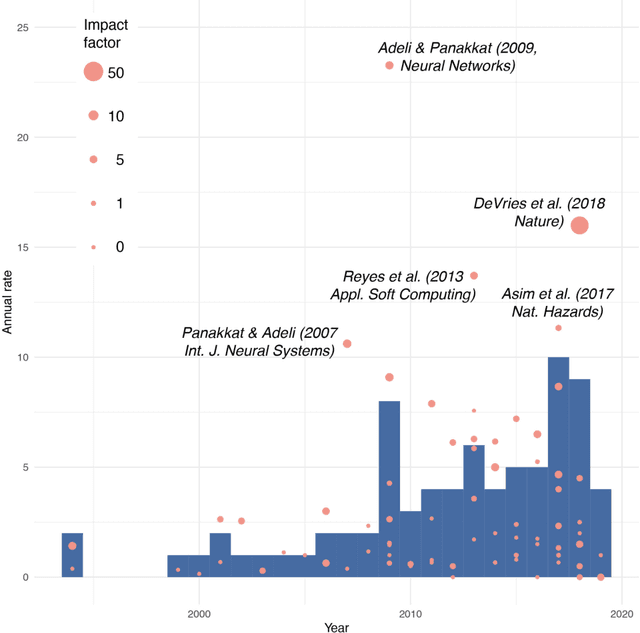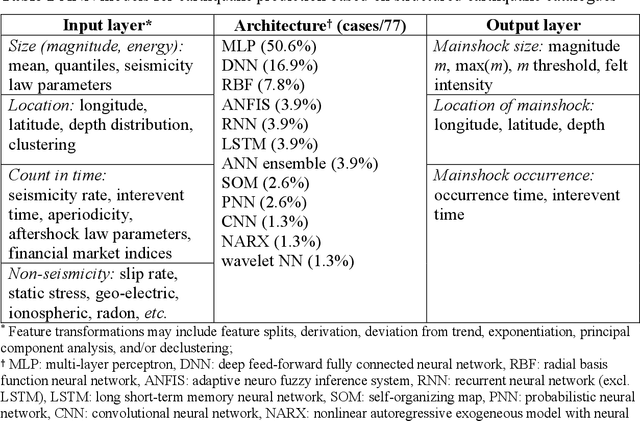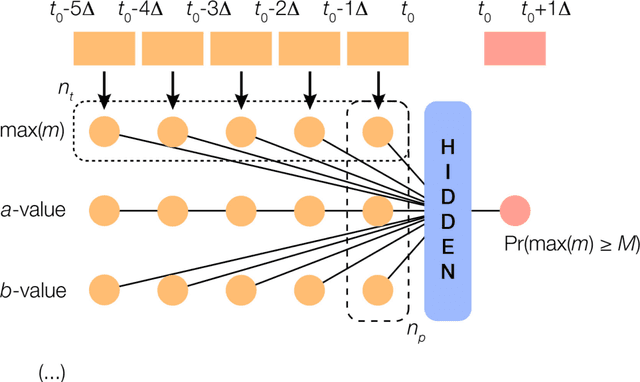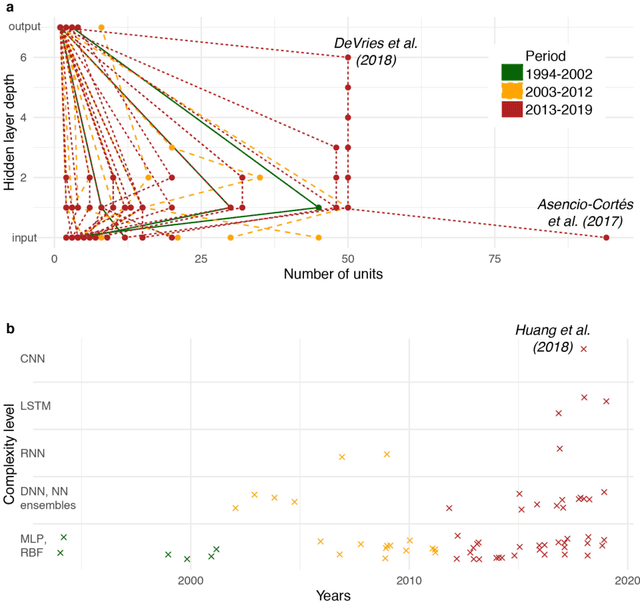Arnaud Mignan
Neural Network Applications in Earthquake Prediction (1994-2019): Meta-Analytic Insight on their Limitations
Oct 02, 2019



Abstract:In the last few years, deep learning has solved seemingly intractable problems, boosting the hope to find approximate solutions to problems that now are considered unsolvable. Earthquake prediction, the Grail of Seismology, is, in this context of continuous exciting discoveries, an obvious choice for deep learning exploration. We review the entire literature of artificial neural network (ANN) applications for earthquake prediction (77 articles, 1994-2019 period) and find two emerging trends: an increasing interest in this domain, and a complexification of ANN models over time, towards deep learning. Despite apparent positive results observed in this corpus, we demonstrate that simpler models seem to offer similar predictive powers, if not better ones. Due to the structured, tabulated nature of earthquake catalogues, and the limited number of features so far considered, simpler and more transparent machine learning models seem preferable at the present stage of research. Those baseline models follow first physical principles and are consistent with the known empirical laws of Statistical Seismology, which have minimal abilities to predict large earthquakes.
Generalized Earthquake Frequency-Magnitude Distribution Described by Asymmetric Laplace Mixture Modelling
Oct 17, 2018



Abstract:The complete part of the earthquake frequency-magnitude distribution (FMD), above completeness magnitude mc, is well described by the Gutenberg-Richter law. The parameter mc however varies in space due to the seismic network configuration, yielding a convoluted FMD shape below max(mc). This paper investigates the shape of the generalized FMD (GFMD), which may be described as a mixture of elemental FMDs (eFMDs) defined as asymmetric Laplace distributions of mode mc [Mignan, 2012, https://doi.org/10.1029/2012JB009347]. An asymmetric Laplace mixture model (GFMD- ALMM) is thus proposed with its parameters (detection parameter kappa, Gutenberg-Richter beta-value, mc distribution, as well as number K and weight w of eFMD components) estimated using a semi-supervised hard expectation maximization approach including BIC penalties for model complexity. The performance of the proposed method is analysed, with encouraging results obtained: kappa, beta, and the mc distribution range are retrieved for different GFMD shapes in simulations, as well as in regional catalogues (southern and northern California, Nevada, Taiwan, France), in a global catalogue, and in an aftershock sequence (Christchurch, New Zealand). We find max(mc) to be conservative compared to other methods, kappa = k/log(10) = 3 in most catalogues (compared to beta = b/log(10) = 1), but also that biases in kappa and beta may occur when rounding errors are present below completeness. The GFMD-ALMM, by modelling different FMD shapes in an autonomous manner, opens the door to new statistical analyses in the realm of incomplete seismicity data, which could in theory improve earthquake forecasting by considering c. ten times more events.
 Add to Chrome
Add to Chrome Add to Firefox
Add to Firefox Add to Edge
Add to Edge